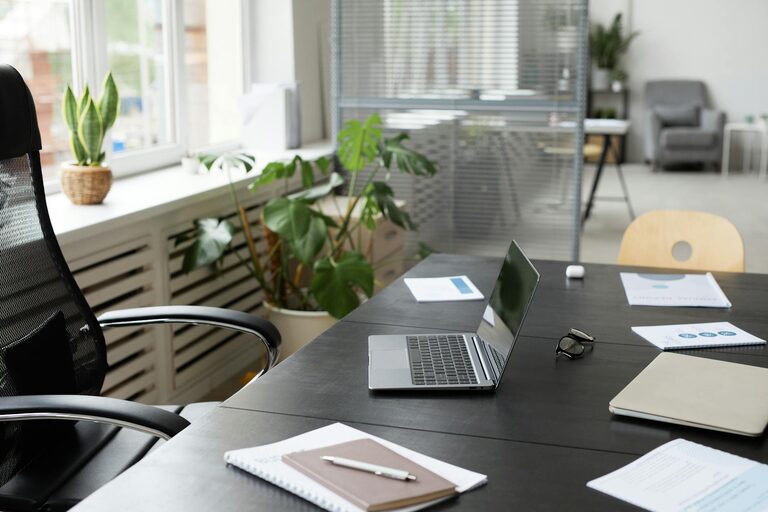Creating a workspace that promotes both focus and comfort is essential for productivity and overall well-being. Whether you work from home or in an office, a thoughtfully arranged desk setup can make a significant difference in how effectively you work and how comfortable you feel throughout the day. In this post, we’ll explore practical tips to help you design a desk setup that supports your best work habits.
Why Desk Setup Matters
Before diving into the tips, it’s helpful to understand why your desk setup influences focus and comfort. A cluttered or poorly arranged workspace can lead to distractions, discomfort, and fatigue. Conversely, an organized, ergonomic environment helps minimize physical strain and mental distractions, making it easier to stay engaged in your tasks.
Ergonomics: Comfort at the Core
Comfort starts with ergonomics — arranging your workspace to fit your body’s natural posture, reducing strain and the risk of injury.
Choose the Right Chair
– Adjustability: Opt for a chair with adjustable height, backrest, and armrests.
– Support: Look for a chair that supports the natural curve of your spine.
– Comfort: Use cushioning that’s firm yet comfortable for extended sitting.
Position Your Monitor Properly
– Place your monitor at eye level to avoid neck strain.
– Keep it about an arm’s length away.
– If using multiple screens, position them so your neck remains neutral.
Desk Height and Placement
– Your desk should allow your elbows to be at 90 degrees when typing.
– Feet should rest flat on the floor or on a footrest.
– Keep frequently used items within easy reach to reduce stretching.
Organizing for Focus
A tidy desk helps clear your mind, so organization plays a big role.
Declutter Regularly
– Remove unnecessary items from your desk surface.
– Keep only essential tools and items within arm’s reach.
– Use drawers or storage boxes for less frequently used items.
Use Cable Management Solutions
– Bundle cables with clips or sleeves.
– Keep cords out of your workspace to reduce visual clutter.
Incorporate Smart Storage
– Use vertical space with shelves or wall organizers.
– Utilize drawer dividers to separate different types of supplies.
– Consider containers or trays for pens, paper, and other small items.
Lighting: Setting the Right Mood
Proper lighting reduces eye strain and supports alertness.
Prefer Natural Light
– Position your desk near a window if possible.
– Use blinds or curtains to control glare.
Add Task Lighting
– Use adjustable desk lamps to focus light where needed.
– Choose bulbs with a color temperature between 4000K and 6500K for productivity.
Personalize Your Space Mindfully
Personal touches can make your workspace more inviting but should not create distractions.
– Add a small plant to bring freshness.
– Use inspiring photos or artwork.
– Limit decorations to a few meaningful items to maintain focus.
Incorporate Movement and Breaks
Physical comfort is not just about your setup — it’s also about how you use it.
– Stand up or stretch every hour.
– Consider a sit-stand desk or desk converter.
– Use a timer or app to remind you to take short breaks.
Technology and Tools for Productivity
The right tools can enhance your desk setup.
– Use ergonomic keyboards and mice to reduce strain.
– Invest in a monitor stand or laptop riser.
– Utilize organization apps or calendars to keep track of tasks.
Maintaining Your Desk Setup
– Schedule regular cleaning and reorganization.
– Adjust your setup as your needs change.
– Pay attention to your body’s signals and tweak for comfort.
Final Thoughts
Creating a desk setup for focus and comfort is an ongoing process, balancing ergonomics, organization, lighting, and personalization. By paying attention to these elements and making thoughtful adjustments, you can build a workspace that not only supports your productivity but also promotes your health and happiness during your workday.
Start small, test what works best for you, and enjoy the benefits of a workspace designed with your focus and comfort in mind.

